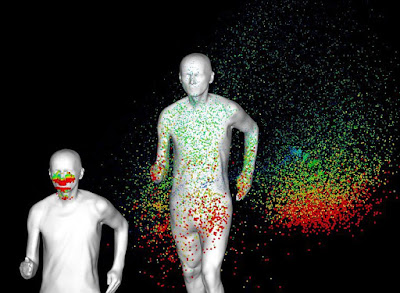What Happens Next After What Happens Next
 We are in the middle of an unprecedented crisis of unknown depth and length. What a perfect storm, of severe pain aggravated by uncertainty around how bad it will get and how long it will be this bad.
We are in the middle of an unprecedented crisis of unknown depth and length. What a perfect storm, of severe pain aggravated by uncertainty around how bad it will get and how long it will be this bad.Speaking of storms, places that have to deal with natural disasters actually have a framework for surviving today and preparing for tomorrow. And it turns out that resilience in the face of hurricanes and tornados is also of use in the face of viral outbreaks and economic shutdowns.
An important consideration in all this is protecting the most vulnerable among us. It is certain, almost by definition, that no matter the crisis, absent vigorous and sustained efforts the most vulnerable among us will suffer the worst. That has been the case with this current pandemic, to devastating effect. Respect to those who are trying to be part of the vigorous and sustained efforts that mitigate against that.
I read a lot of history, and think often of the disconnect between what little we knew back when versus what we know now, and therefore how vast will be the disconnect between what little we know now versus what we will know in the future.
Consider, for example, since we're talking about COVID-19, how little we knew about germs a scant 150 years ago. A big hang-up in getting past this was that you couldn't see germs, so it was thought to be impossible that they could exist. Of course, we now know that things can be there even if the naked eye can't see them.
What if, within our lifetimes, we are able to make visible dangerous germs, through some sort of tinting process? Imagine me washing hands with my grandson after he uses the toilet, and as we lather and rinse under the sink, an infrared projection onto our hands shows where germs are, and we can watch the germs get washed off.
I have no idea how the technology would work, but you could imagine how something like this could be possible within our lifetimes, to the point that as my grandson and I are washing hands, he'd ask me "so you just washed your hands and you had no idea if the germs were still there or not," in the same way I might've asked my great-great-great-grandfather how it was possible that no one knew that germs even existed.
You can see where this might go. You could set up a much larger projection at the entrance of a supermarket or a nursing home or a public school. And you could have it pick up and colorize not just germs on your hands but also viruses in your body. Imagine the shaming, social ostracizing, and segregation that would follow, and imagine who might disproportionately bear the brunt of that.
You might consider this an outlandish scenario, but I don't. A very contagious and deadly virus is no joke. People are hyper-sensitized to want to avoid contact with it. If the technology can get there, there would be a huge outcry if places didn't implement it in the interest of safety.
On a related note, places like the Jersey Shore and Key West are implementing elaborate albeit clunky systems for verifying residency, because they don't want visitors coming into their communities at a time when contagion is high. You can imagine a far more technologically frictionless and personally invasive version of this, implemented not just by vacation destinations but by gated communities or even entire neighborhoods. In that scenario, who do you think gets left out?
We may have evolved significantly in our tolerance of others. But when it comes to viruses, fear of "other" is profound. And I fear, projecting out into the future, that the most vulnerable among us will be adversely shunned and excluded as a result. I hope I'm wrong, but it'll take vigilance to make sure of it.
Comments